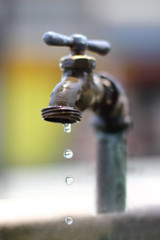Managing fluids is one step toward better bladder control

I was hiking in the woods recently with a group of women friends when something caught my attention. It wasn’t an interesting bird or plant, but the surprising number of “pit stops” my friends needed to make.
Their frequent detours into the bushes struck me because I had just finished working on Better Bladder and Bowel Control, the latest Special Health Report from Harvard Medical School. According to the report, incontinence is the unintended loss of urine or feces that is significant enough to make it difficult to do ordinary activities without frequent trips to the restroom. In the United States, about 32 million men and women have some degree of incontinence. For women, incontinence is a common but rarely discussed result of childbirth and aging—that could explain the pit stops of my hiking friends, who were all mid-life mothers. For men, incontinence is most often a side effect of treatment for prostate disorders.
Many things can go wrong with the complex system that allows us to control urination. May Wakamatsu, M.D., a urogynecologist at Massachusetts General Hospital, told me that in women, the muscles supporting the bladder or urethra (the tube through which the urine flows) can be weakened during childbirth, causing urine to leak during coughing, jumping, or laughing.
For men, the normal flow of urine through the urethra can be partially blocked by an enlarged prostate or by prostate treatment, said Joseph Grocela, M.D., a urologist at Massachusetts General Hospital. A backup of urine in the bladder causes what’s called overflow incontinence. For both men and women, nerve damage, overactive bladder muscles, and muscles weakened by aging can also disrupt the normal function of the urinary system. Similarly, damage to the nerves and muscles that control the anal sphincter muscles can result in fecal leakage.
Treating incontinence depends on what is causing it. Treatments include exercises to strengthen the pelvic floor, fluid management, medications, and surgery.
For people with urinary incontinence, fluid management is an easy place to start. It can be used in combination with other treatments. Here are the fluid management guidelines described in Better Bladder and Bowel Control:
- First, keep track of how much fluid you drink each day and at what time.
- Next, try to drink only when you feel thirsty, and don’t exceed six to eight 8-ounce cups of fluid per day from all sources, including soup or milk in your cereal, unless you have a medical condition that requires more. Note that an 8-ounce cup is only two-thirds of a standard soda can.
- Don’t drink more than 8 ounces at a time.
- Don’t guzzle. The faster your bladder fills, the more likely you are to feel urgency to urinate.
- Minimize caffeinated and carbonated drinks.
- Decrease or eliminate alcohol consumption.
- If you are thirsty because it is hot or you have exercised, don’t hesitate to drink water.
- Lastly, follow this tip: Fill your glass only 2/3 as full as you usually do. One study showed that this technique alone helped reduce episodes of incontinence.
For more information about this common problem, take a look at Better Bladder and Bowel Control, which is available at /BBBC. There you can see a description of the report and its table of contents, and read a free excerpt that describes the various types of urinary incontinence.
About the Author

Kay Cahill Allison, Former Editor, Harvard Health
Disclaimer:
As a service to our readers, Harvard Health Publishing provides access to our library of archived content. Please note the date of last review or update on all articles.
No content on this site, regardless of date, should ever be used as a substitute for direct medical advice from your doctor or other qualified clinician.















